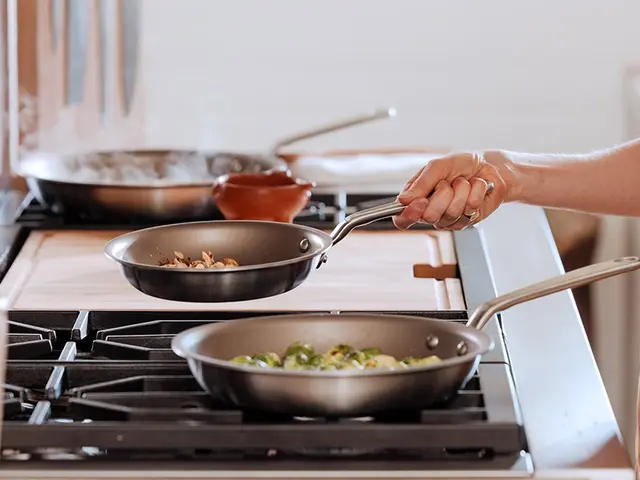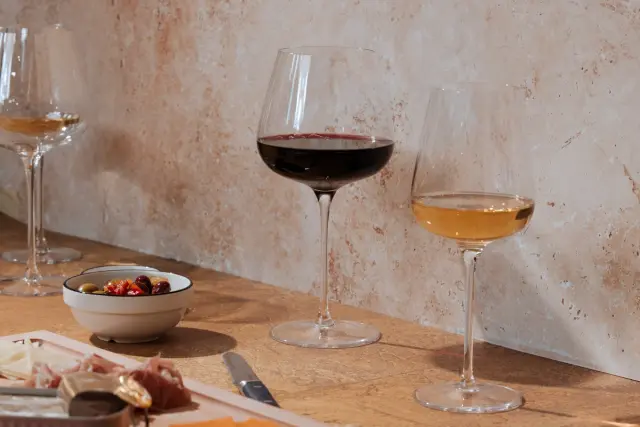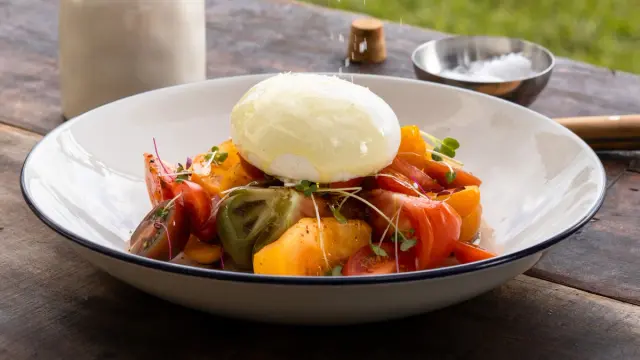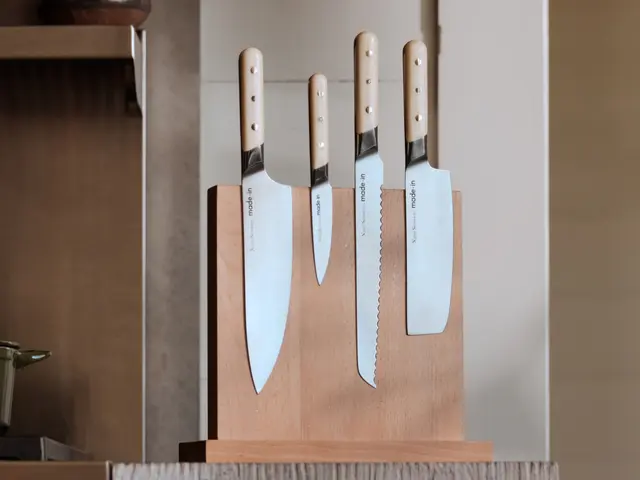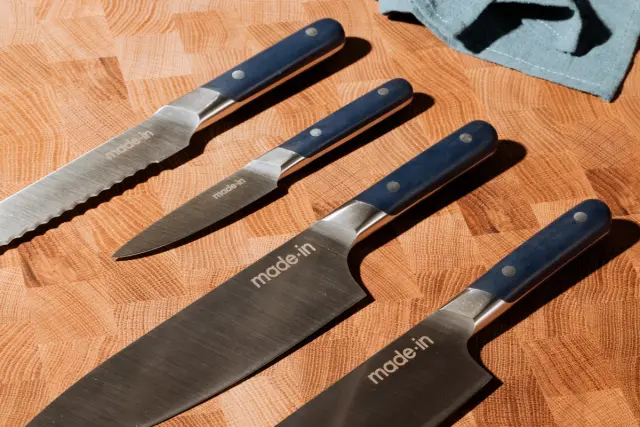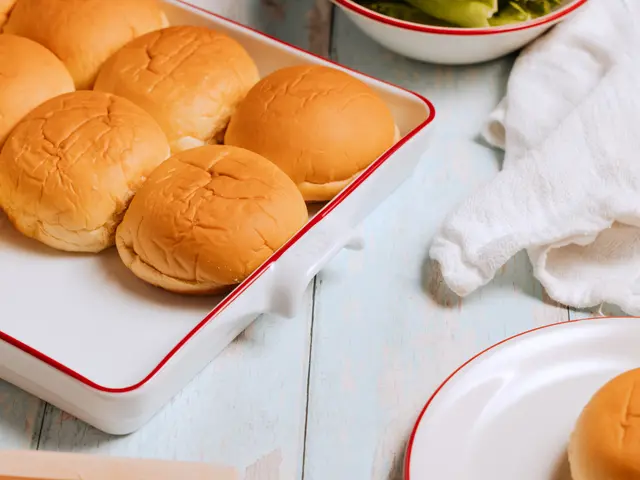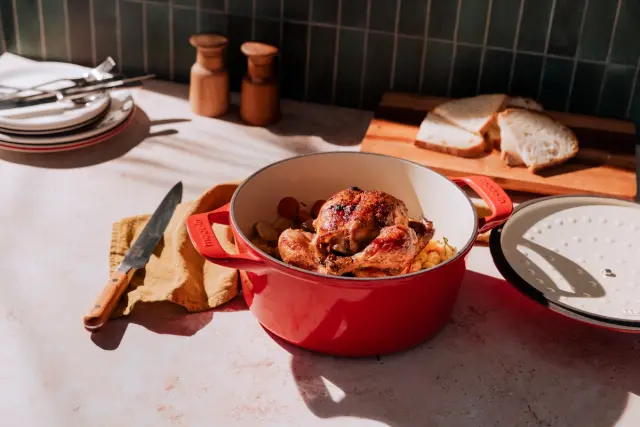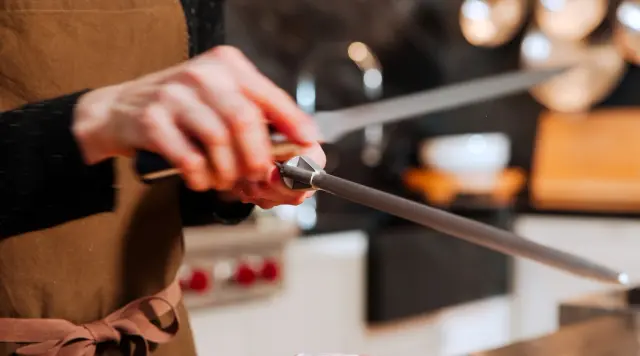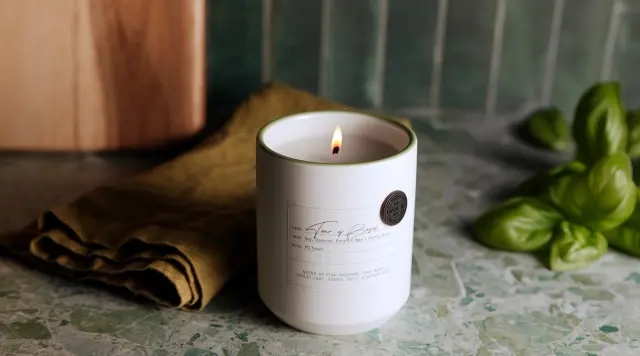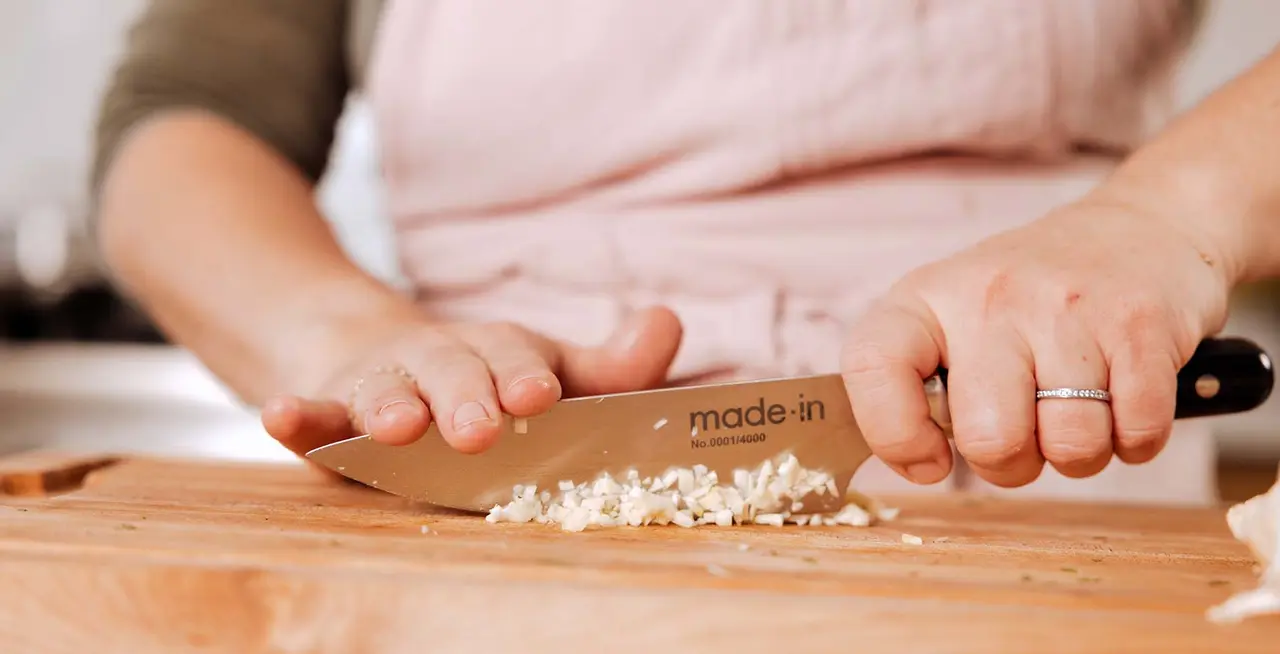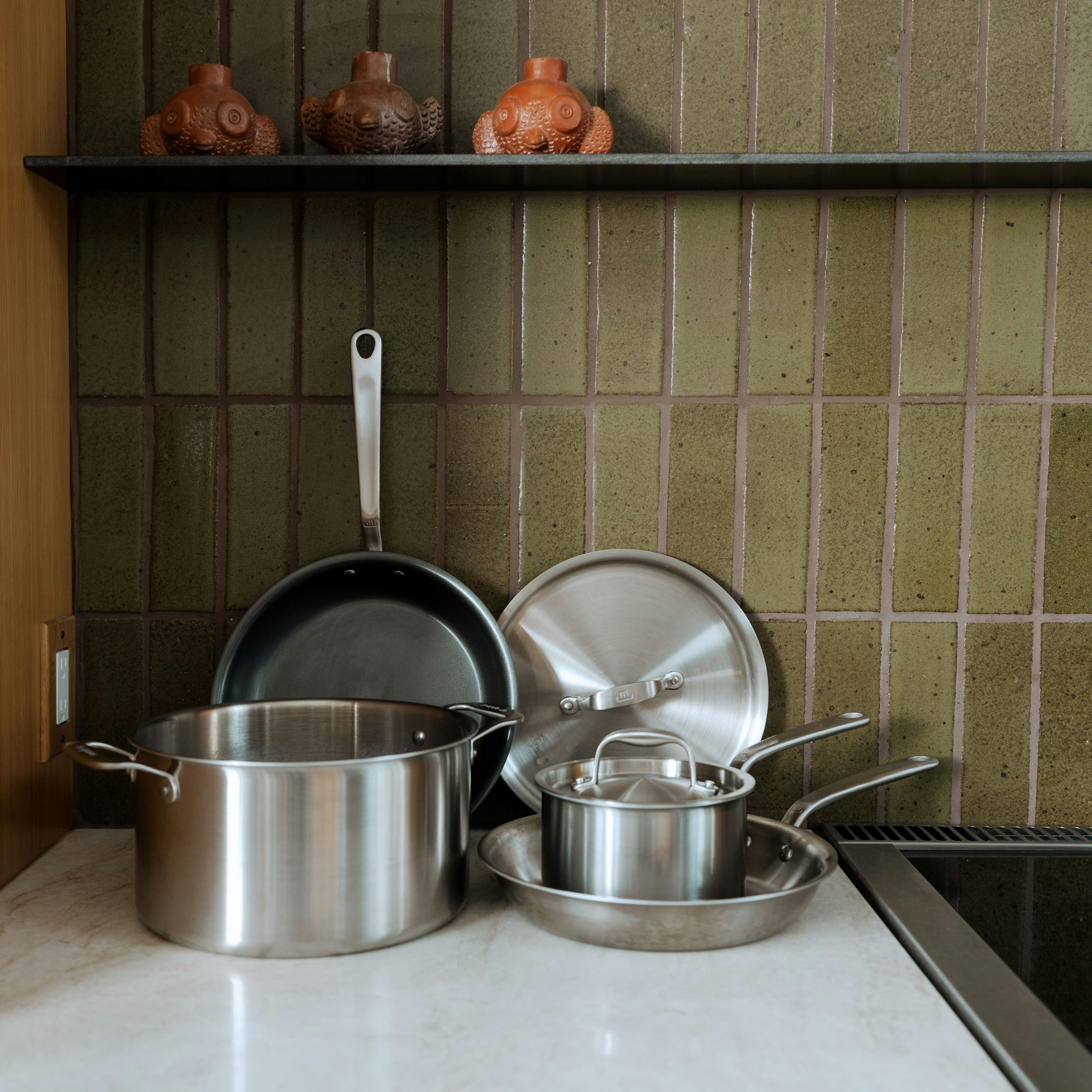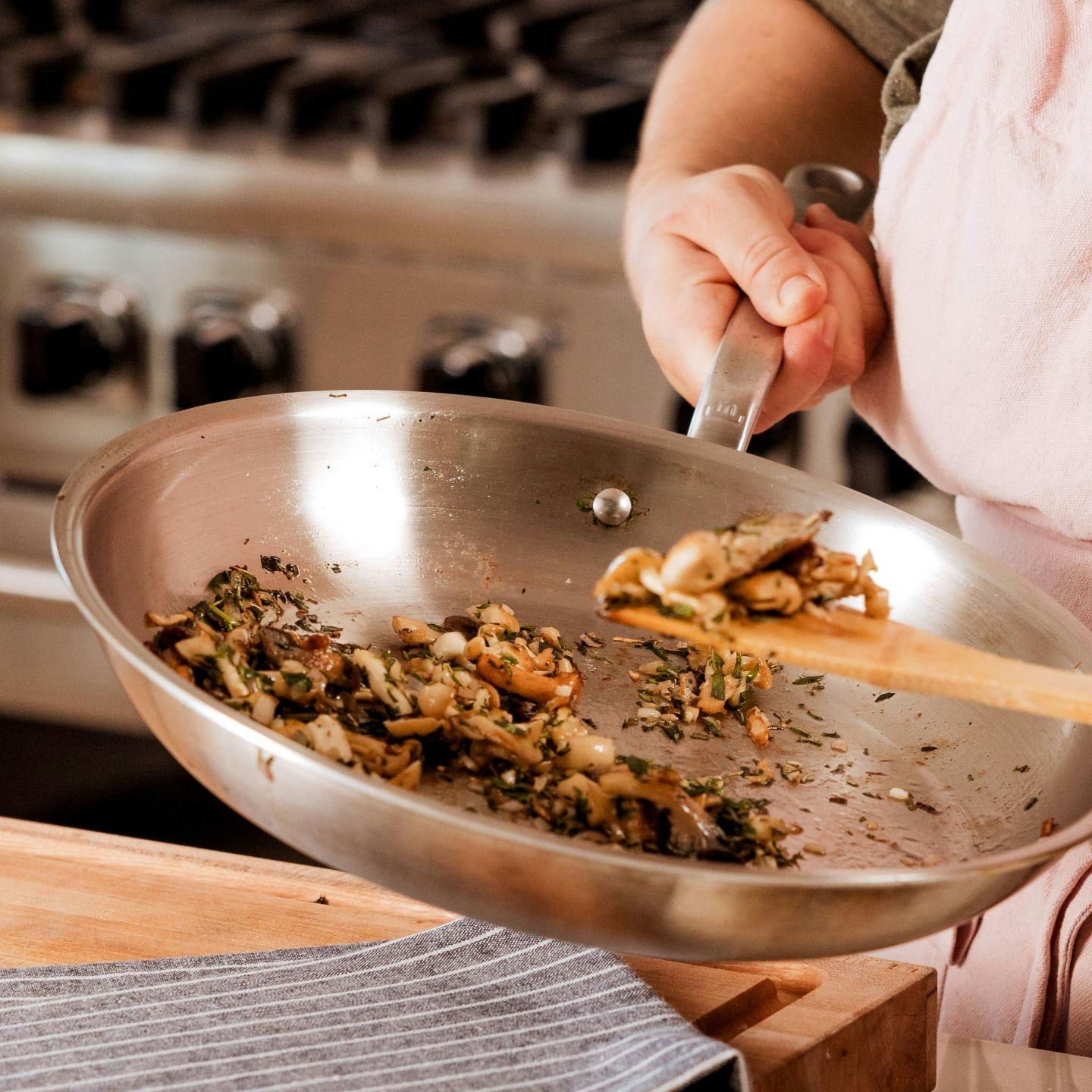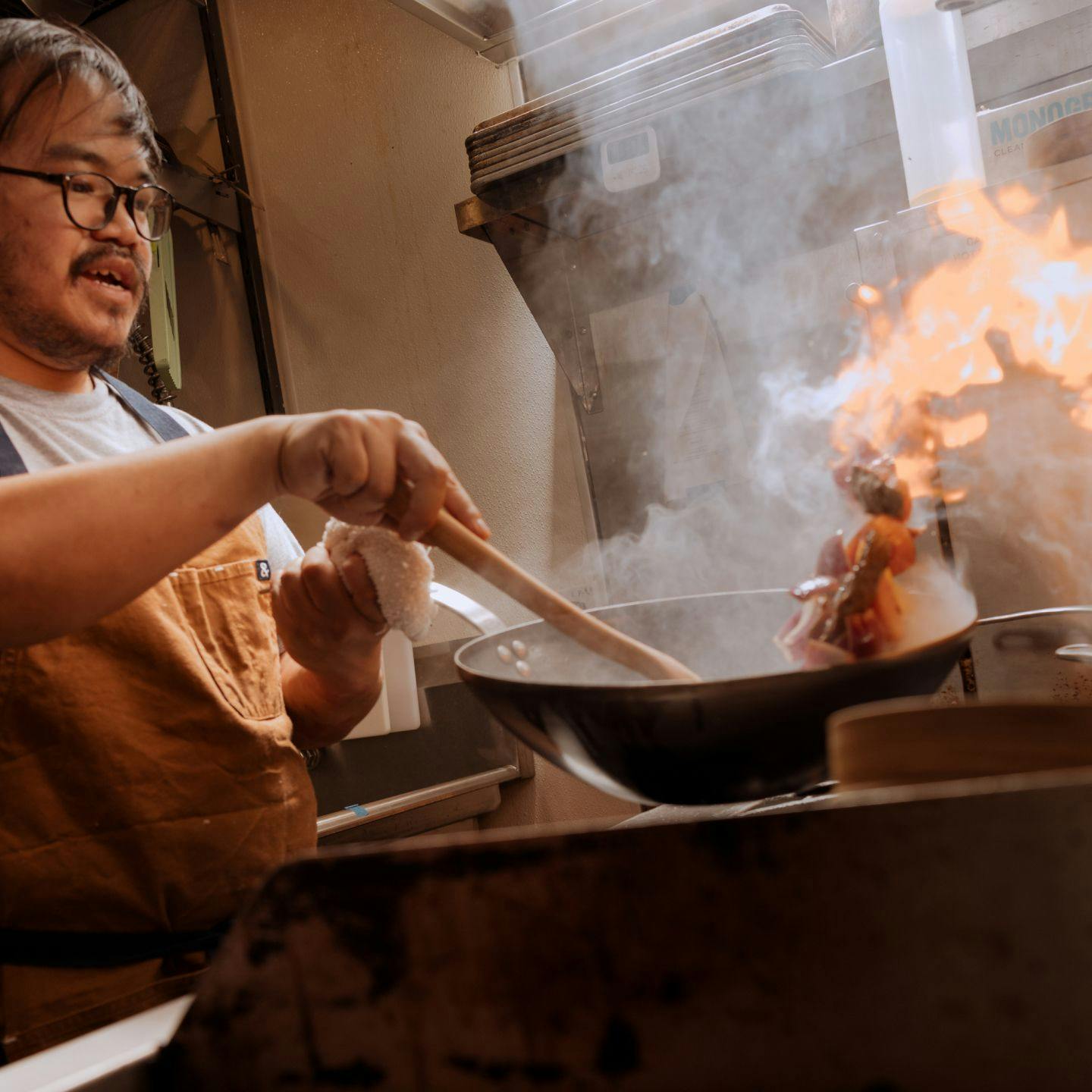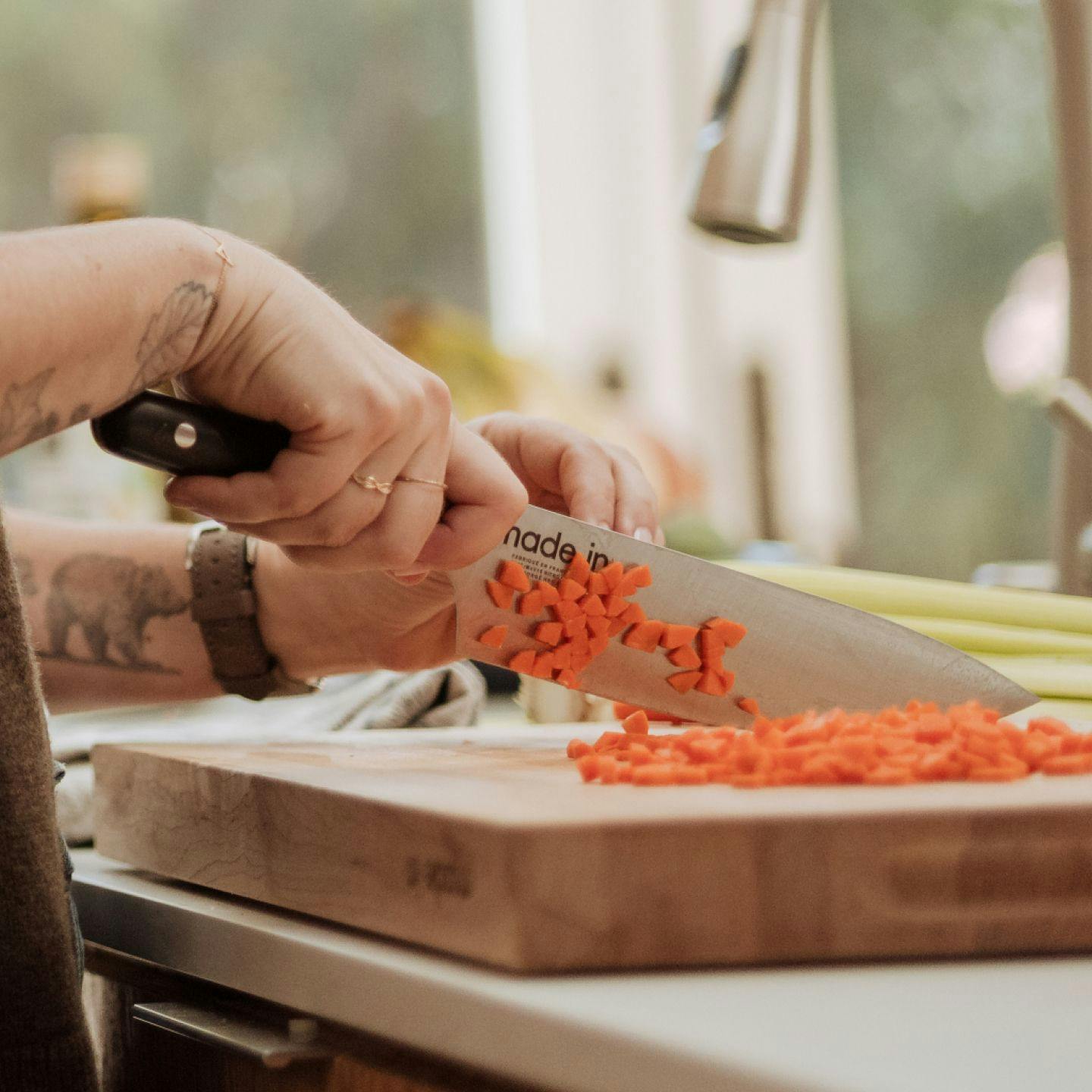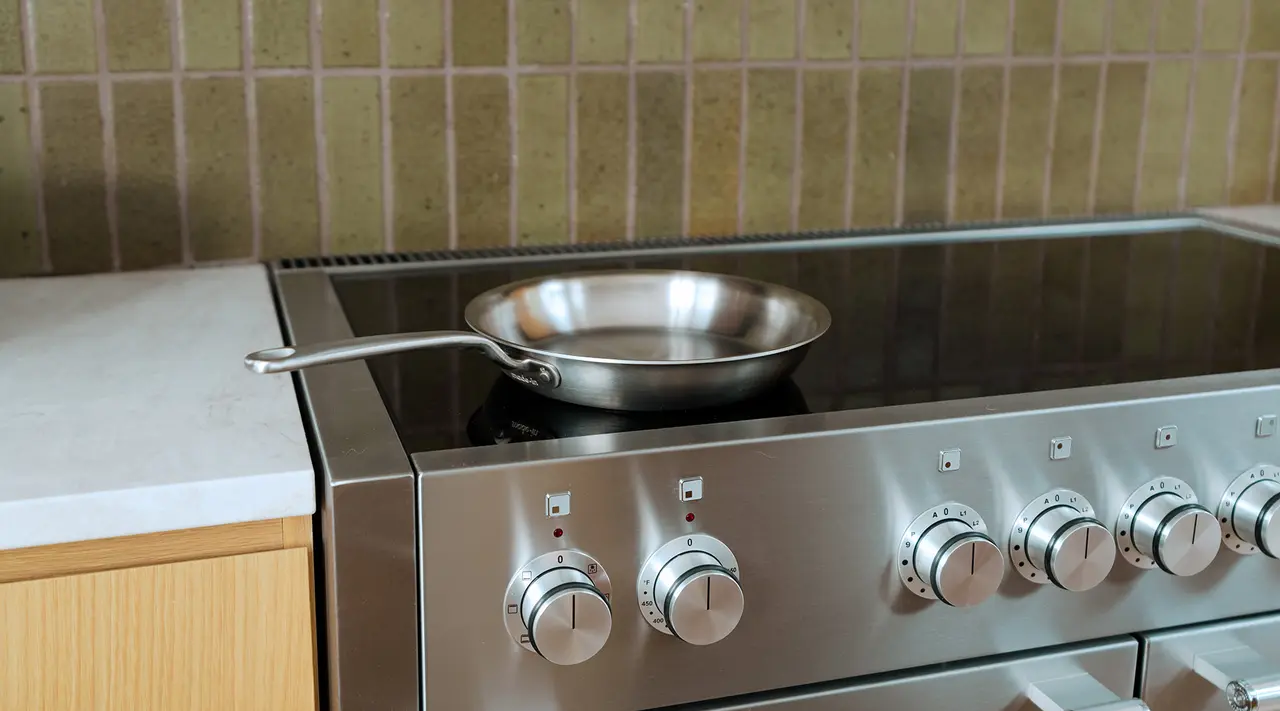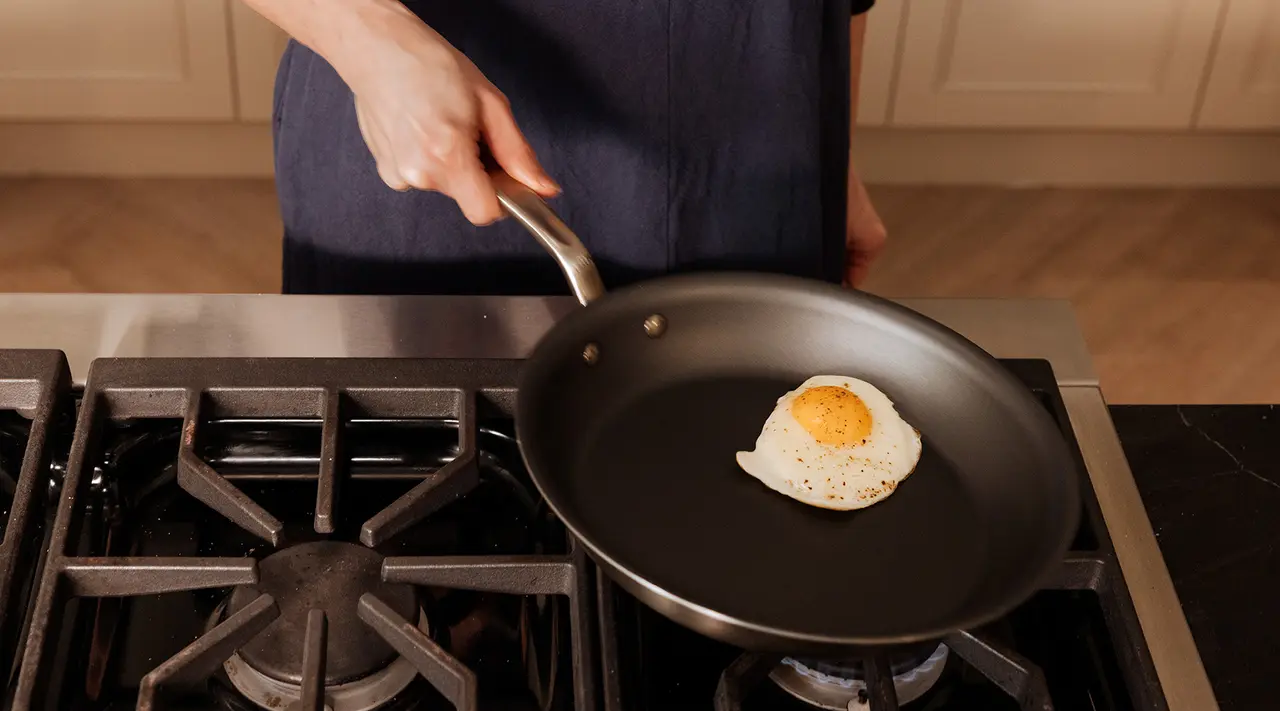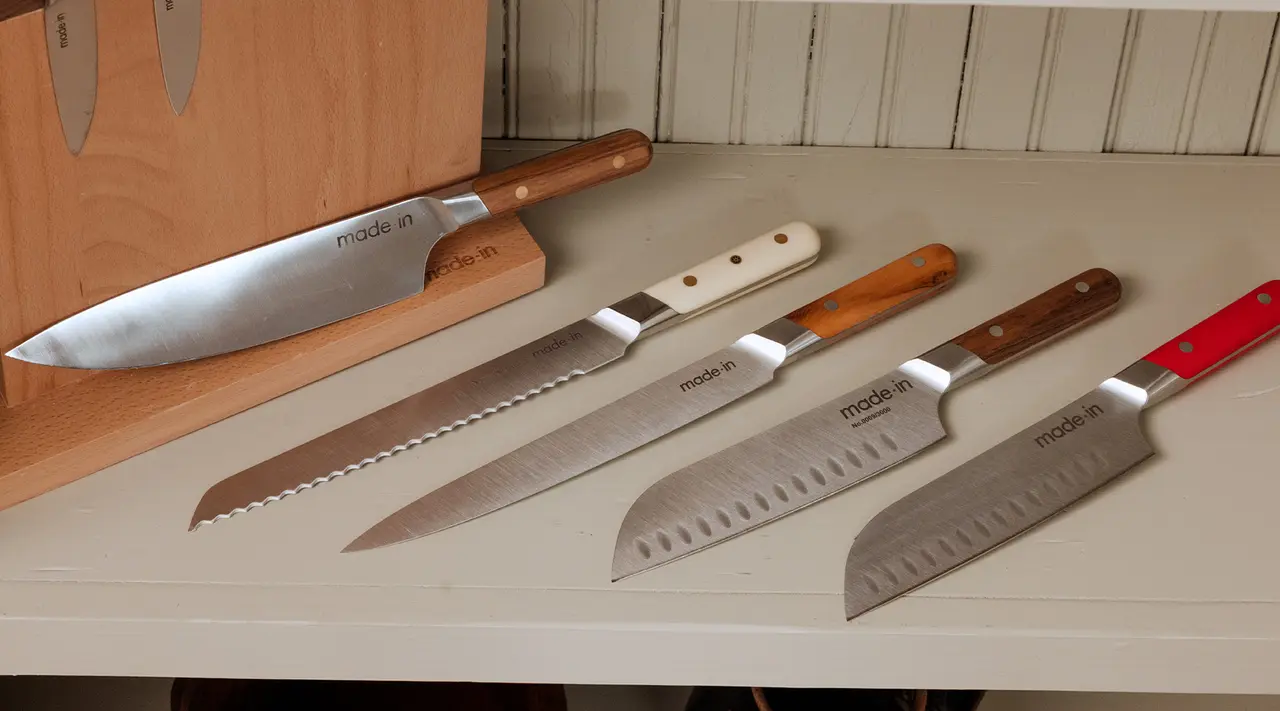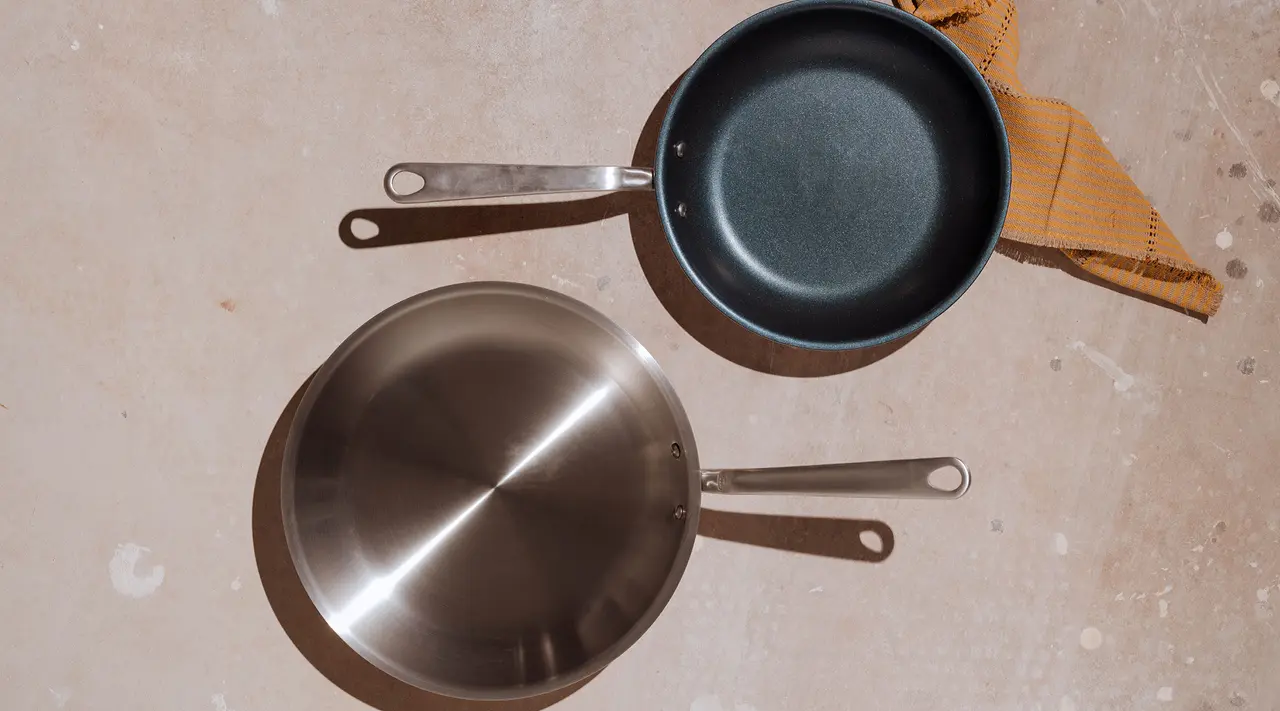If you look closely (but not too closely) at the blade of your kitchen knife, you’ll notice that the edge—right where the two sides of the blade taper to a point—isn’t completely smooth. Instead, it features an angled slope on one or both sides. This is known as the “bevel” — when a knifemaker is shaping a blade, they’ll grind the steel down at a slight angle for a sharper, more precise cutting edge. You’ll find knives ground down on both sides, known as a double bevel; or on one side, aptly dubbed single bevel.
But is there really that big of a difference between single and double beveled blades? To be honest: yes, there really is. Here’s why—and how to decide which you need for your own kitchen.
Understanding Single Bevel Knives
Single bevel blades are typically found in traditional Japanese knife styles, such as the usuba, deba or yanagi, which tend to have more specific applications than the all-purpose, Western-style chef knife.
For example, the single-bevel yanagi—which resembles a fillet knife—is designed for slicing boneless fish fillets for sashimi and sushi, while the deba’s thin blade works particularly well with vegetables.
Advantages of Single Bevel Knives
Because they only have to sharpen one side of a single bevel knife, a knife maker is able to create an even thinner, more sharply angled blade than they would with a double bevel knife. This—plus the slightly concave surface on the unsharpened side of the blade—allows the cook to make exceptionally precise cuts with minimal friction.
Potential Challenges of Using Single Bevel Knives
While double bevel knives are relatively beginner-friendly, single bevel knives are slightly trickier. In addition to having thinner and more delicate edges than many double bevel knives, single bevel knives also pull or “steer” slightly to one side or the other due to their asymmetrical edge. They require a bit of practice to learn how to use them properly.
Exploring Double Bevel Knives

The vast majority of German, French, and American-made knives are made with a double bevel, which means that the blade is sharpened on both sides. This construction makes for a slightly more durable, robust cutting edge than a single bevel knife, which is less likely to chip or break under pressure.
Advantages of Double Bevel Knives
What can you use a double bevel knife for? Well—pretty much anything, depending on the shape and size of the blade, as double bevel knives are known for their versatility in the kitchen.
Even if you only have a gyuto—the slightly more all-purpose Japanese equivalent of a Western chef knife—you can do everything from deboning a whole fish to chiffonading fresh herbs. It may not be the most precise tool, but it still does a heck of a job. Double bevel knives are also easier to learn how to use compared to single bevel knives, and easier to sharpen on a whetstone.
Limitations of Double Bevel Knives
A double bevel knife can technically handle the same tasks as most single bevel knives: you can, for example, use a fillet knife in place of a yanagi, or a Western-style chef knife in place of a deba. But if you’re looking for maximum precision, or you’re interested in traditional Japanese techniques like slicing raw fish for sushi, a single bevel knife can’t be beat.
Key Differences Between Single Bevel and Double Bevel Knives
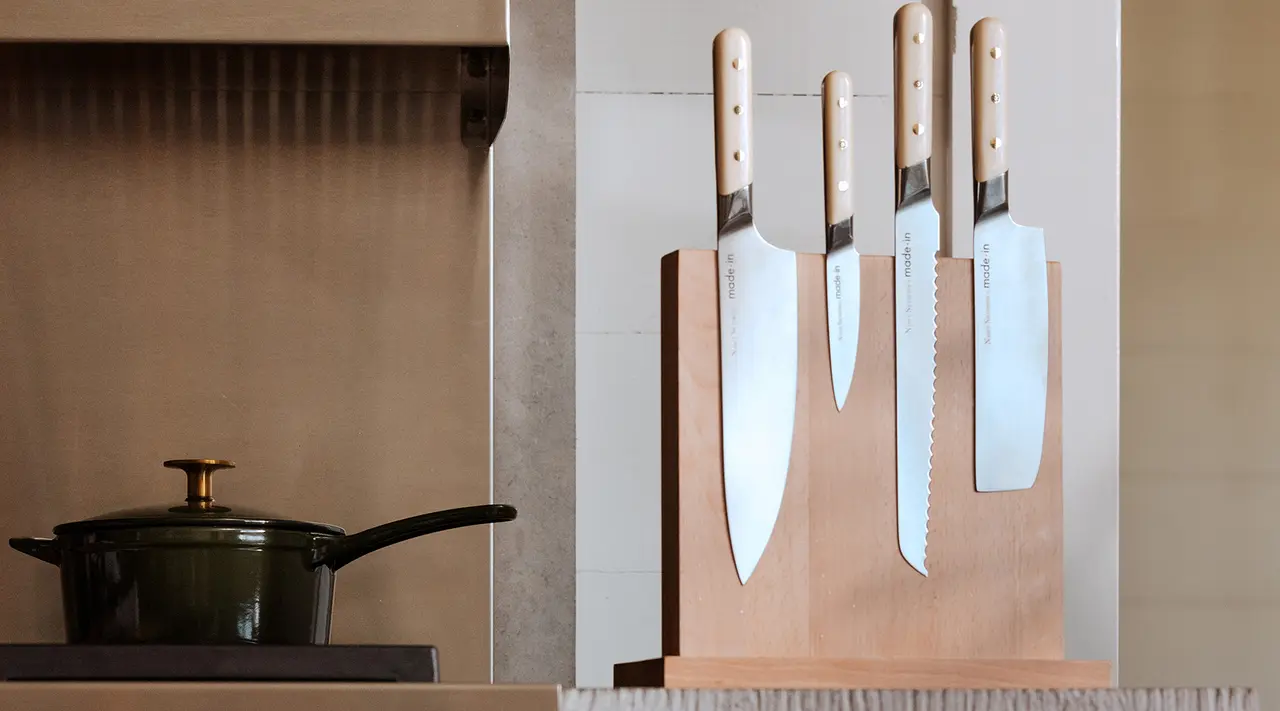
Still have questions about single vs. double bevel knives? We’ve got answers.
Blade Geometry and Edge Alignment
A cross section of most double bevel knives would look like the tip of a pencil or a fountain pen, with a sharply tapered point. While some feature an asymmetrical edge, with a slightly different angle on each side—such as the gyuto—most are sharpened symmetrically.
Single bevel knives, on the other hand, resemble a chisel: while the front side of the blade features a tapered edge similar to the one you’d see on a double bevel knife, the back side features a slight curve, or “urasuki.” As we mentioned above, this smooth, un-beveled cutting edge allows food to more easily slide off the surface of the blade, and allows you to make cleaner cuts, which helps to preserve the texture and flavor of food.
Cutting Techniques and Applications
Because they lack the heft of a double bevel knife, single bevel knives feature an especially light, thin blade. While this makes them ideal for cutting smooth, frictionless slices of raw fish and vegetables, it also makes them pretty delicate. Combine that with the brittleness of Japanese steel, and you’ve got a fairly fragile blade that’s more prone to chipping or breaking than a double bevel knife.
If you’re slicing tender raw scallops or tuna, this fragility isn’t much of an issue: for carving up a roast or hacking apart a whole kabocha squash, however, you’ll need the heft and toughness of a double bevel knife.
Maintenance and Sharpening Considerations
Got your heart set on a single bevel knife? Before you buy, make sure you’ve got a plan for how to sharpen it. Most of the guides for sharpening on a whetstone assume that you’ve got a double bevel knife, which won’t work with a single bevel blade—the distinct shape and profile requires a different sharpening technique.
If you haven’t mastered this yourself, make sure you have access to a knife sharpener with experience in single bevel blades.
Cultural and Historical Significance
More modern Japanese knife styles—like the santoku or gyuto—feature a double beveled edge. These knives are designed to be multipurpose, and they can be used for a variety of proteins and vegetables.
In contrast, more traditional Japanese single bevel knives, like the usuba or yanagi, are designed for more specific ingredients like fish, vegetables, or noodles. These knives have been around longer than Western-style knives like the gyuto, which was invented in the mid- to late-18th century in Japan—around the time that Japan began importing Western ingredients, like beef, and adapting their preparation methods to match.
Choosing the Right Knife for Your Culinary Needs
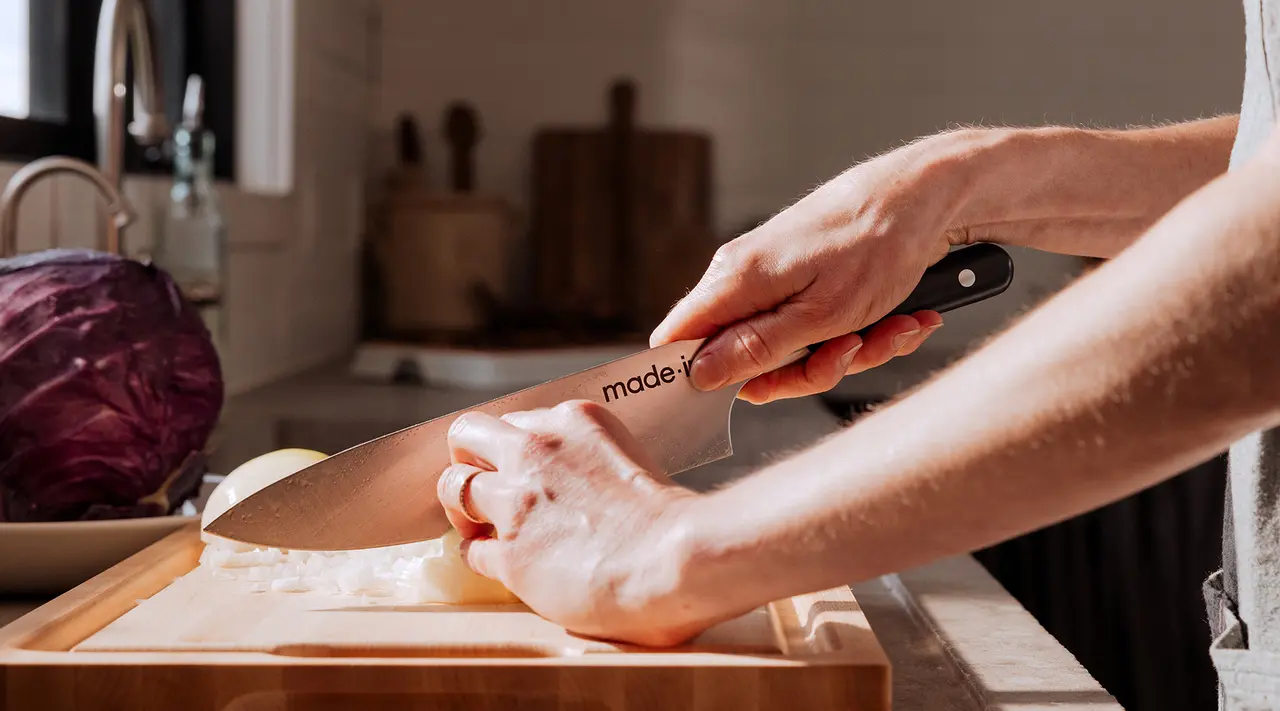
A single-bevel knife like an usuba is a beautiful tool, and totally worth adding to your collection—if you know what you’re getting into. These highly specialized knives are not going to stand in for your chef knife, and they require a separate set of skills to ensure that you’re handling them safely and correctly—not to mention, they require a slightly different method of whetstone sharpening (though you won’t need to sharpen them as often).
On the other end, a good, sharp double bevel knife like a gyuto or santoku can handle the vast majority of daily kitchen tasks, and is much more beginner-friendly.
Ready to Shop?
Double bevel knives offer a pretty sweet deal—not only are they approachable for new cooks, but they’re also wonderfully versatile and easy to maintain. For the first-time knife buyer, double bevel is hands-down our blade of choice.
With that said, a single-sided blade like a deba or usuba can be an exciting addition for a knife collector—whether you’re into traditional Japanese cooking or not. Either way, we think everyone should try making sushi at home at least once.
